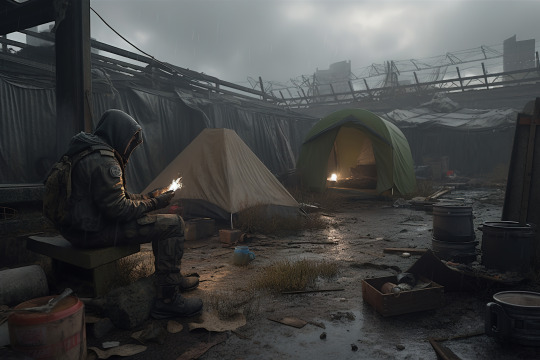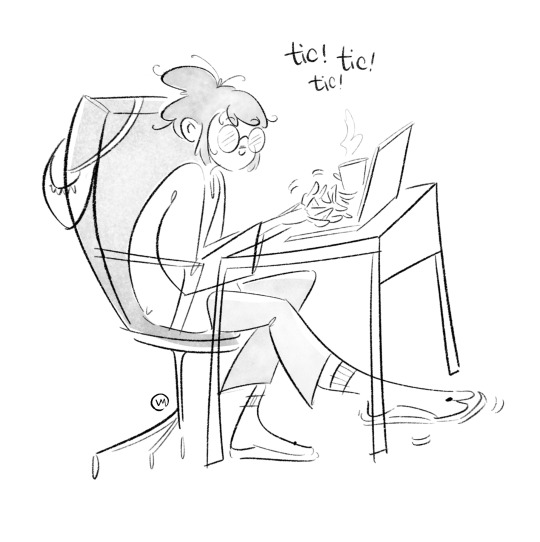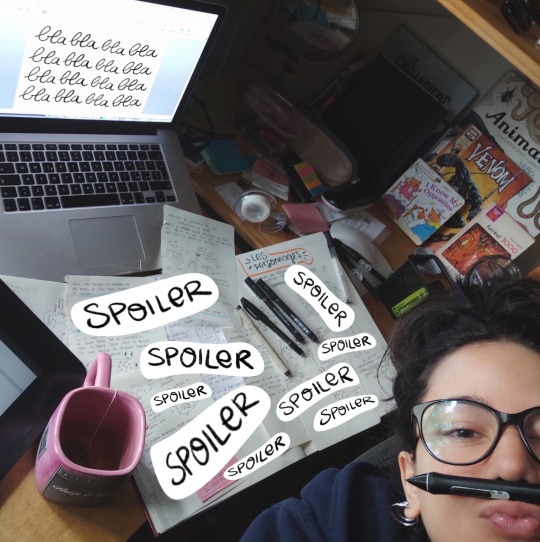#writingprocess
Text
P1 -Types of Scarcity in Post-Apocalyptic Fiction: A Comprehensive Guide to Survival Elements in Dystopian Worlds

Understanding the Types of Scarcity
Material Resources: First, start with food, water, fuel, and ammo. Once you have the basics, move to less commonly thought-about things like batteries, clothing, scrap metal, and wood.
Skills and Knowledge: Doctors, engineers, survival experts, and mechanics would be some people worth knowing or being in a post-apocalyptic world. What if there were none?
Emotional Resources: Once the world goes to hell, trust and community become resources. Surviving sometimes means getting along with others; you'll want all parties to mean it. Getting fed to a zombie so someone can escape sounds like no fun.
Information: Who are you going to let hold the map for you? Things can get harder on your team if it gets stolen, left behind, or destroyed. In a world without GPS, information is a resource; let's face it, you must trust its handler.
This is part one of a five-part writing guide to post-apocalyptic scarcity. Tune in next time for a more in-depth breakdown of scarcity and who makes the decisions? Not me, that's for sure. I'd probably be the one used as zombie bait first.
-Indigo Everly
Want more advice? Check out my other articles!
#WritingCommunity#AmWriting#WritersLife#WritingTips#WritingInspiration#CreativeWriting#WritingPrompts#Writeblr#WritingResources#FictionWriting#PoetryCommunity#NonfictionWriting#Screenwriting#WritersOnTumblr#NaNoWriMo#WritingProcess#CharacterDevelopment#Plotting#EditingTips#Storytelling#PostApocWrite#WastelandWriters#EndTimesFiction#SurvivalWriting#ApocalypticThemes#DystopianElements#SHTFWriting (SHTF: Sh*t Hits The Fan)#FalloutFiction#AfterTheEnd#DystopianDrama
195 notes
·
View notes
Text

Happy New Year, Darlings! Living into my Dolly Levi Era in 2024.
Writing in the New Year as has been custom for some time now, so I'm dreaming up new spectral things while feeling fancy. (Absinthe, as always, in hand.) Hope you all have magical, fresh starts to your year!
#gothic#goth#victorian#ghosts#gaslampfantasy#goth aesthetic#vintage#happy new year#ootd#writingprocess#writing#hello dolly
8 notes
·
View notes
Text

Endings
April 10, 2024|Blogging
Unfortunately, all stories come to an end. Whether good or not. Some endings can be abrupt, unexpected, full-circle, resolved, or cliffhanger-type endings. Personally, I hate an abrupt ending that leaves you to decide what happens next. A happy ending is what most of us want, but sometimes a sad or full-circle ending is better for the story. What type of endings do you prefer? I would love to hear from you and find out. Remember to "Enjoy the Write!" KSCarson
#Blog#Blogger#Blogging#blogoftheday#writing#books#nottomissnovels#authorksc#kscauthor#Souza_Author#story#read#authors#WednesdayMotivation#WednesdayVibes#BookTwitter#WritingProcess#Endings#StoryEnd#mustread#amazonbooks#booksworthreading#barnesandnoble#indieauthor#fivestarreview#goodreads
6 notes
·
View notes
Text
5 Ways to Make Your Writing Sessions More Productive

Writing can be a truly daunting task, and sometimes it can be challenging to get into the right mindset to be productive. Whether you're a professional writer or just starting, there are certain techniques you can use to boost your productivity and make the most of your writing sessions. In this post, I'll be helping you add five beneficial ways to make your writing sessions more productive, so you can achieve your writing goals efficiently.
Section 1: Set Clear Goals
The first step to making your writing sessions more productive is to set clear goals. Without clear goals, it's challenging to measure your progress and stay motivated. Start by defining what you want to accomplish in your writing session. It could be completing a chapter, writing a specific number of words, or finishing a blog post draft, etc. Once you have defined your goals, break them down into smaller, achievable tasks. Create a to-do list and prioritize the tasks based on their importance. This will help you stay focused and on track during your writing sessions.
Focusing on one task at a time will also help you avoid distractions and increase your productivity. Take the time to plan your writing sessions, and you'll see a significant improvement in your output.
Section 2: Create a Distraction-Free Environment
Creating a distraction-free environment is crucial for a productive writing session. Eliminate any potential distractions, such as social media notifications, phone calls, or emails. Turn off your phone or set it to airplane mode, so you're not tempted to check it during your writing session. If you're writing from home, let your family members know that you're working on a project and need some quiet time.
Choose a workspace that is comfortable and conducive to writing.
A cluttered or uncomfortable workspace can affect your concentration and reduce your productivity. Ensure that your workspace is well-lit and has good ventilation. You could also consider playing some soft background music to help you stay focused, but make sure it's not too distracting. Creating a distraction-free environment will help you stay focused and produce quality work in less time.
Section 3: Take Breaks
While it may seem counter-intuitive, taking breaks can actually increase your productivity. Sitting in front of your computer for extended periods can lead to burnout and reduce your creativity. Taking regular breaks can help you recharge and get back to work with renewed energy. Plan your breaks in advance and stick to them. It could be a short walk, a coffee break, or a reading session to one of those unfinished books sitting on your bookshelf. Whatever you choose, make sure it's something that helps you relax and recharge. Avoid checking your emails or social media during your breaks, as this can lead to distractions and reduce the effectiveness of your break. Remember, taking breaks is not a waste of time. It's an essential part of staying productive and achieving your writing goals.
Section 4: Write During Your Most Productive Time of Day
We all have a time of day when we're most productive. Some people are morning people, while others are night owls. Identify your most productive time of day and plan your writing sessions accordingly. During your most productive time of day, you'll be more focused, alert, and creative. You'll also be able to produce more quality work in less time. If you're not sure when your most productive time of day is, try experimenting with different times until you find the one that works best for you. Writing during your most productive time of day will help you stay on track and achieve your writing goals more efficiently.
Additionally, I am currently developing a writing session routine generator that is designed to be highly customizable and supportive. My aim is to deliver a tool that will be of great benefit to all of my followers and users.)
Section 5: Use Writing Prompts or Outlines
Using writing prompts or outlines can help you stay on track during your writing sessions. Writing prompts can help you get started if you're struggling with writer's block. They can also help you generate new ideas and perspectives. An outline is a structured plan that outlines the main points of your writing. It can help you organize your thoughts and ensure that your writing is coherent and well-structured. An outline can also help you save time by reducing the need for extensive revisions. Using writing prompts or outlines is an effective way to stay productive and produce quality work in less time.
As a personal guideline, I make it a point to have an outline, particularly for my blog posts, unless I am engaging in freestyle writing.
Conclusion
Writing is a challenging task that requires focus, discipline, and creativity. By following these five techniques, you can make your writing sessions more productive and achieve your writing goals more efficiently. Start by setting clear goals, creating a distraction-free environment, taking breaks, writing during your most productive time of day, and using writing prompts or outlines. Remember, productivity is not about working harder, but about working smarter. By implementing these techniques, you'll be able to produce quality work in less time, and achieve your writing goals with ease.
TheWriteAdviceForWriters 2023
#writingtips#creativewriting#writingadvice#writingcommunity#writersofinstagram#writingprompts#writinglife#writinginspiration#amwriting#authorsofinstagram#writersblock#writingcoach#writingchallenge#writingworkshop#writingprocess#writingmentor#writingstruggle#writingmotivation#writingresources#writingguide#creative writing#writeblr#thewriteadviceforwriters#writers block#writing tips#writers on tumblr
27 notes
·
View notes
Text


Unlocking the writing process: the best and powerful feeling ever experienced in my life 💥
#veronicamalatestaillustrator#veronicamalatesta#illustrator#illustration#draw#drawings#sketch#sketchbook#sketching#sketches#artwork#comics#cartoon#writing#writingprocess#story#storyboard#bd#bandedessinée#travel#canada#montreal#conceptart#animation#2danimation#girlsinanimation#ipadpro#procreate#cintiq#wacom
17 notes
·
View notes
Text
Hollywood Outreach Program (HOP) ~ Final Deadline: August 31, 2023
The program’s objective is to help writers improve their craft so they may learn the skills necessary to help them achieve their goal of obtaining representation, selling or optioning their work, and/or landing a writing assignment. This program is for feature-length screenplays only.

More Info.
#screenwriting#scriptwriting#amwriting#writing#writer#write#scriptchat#scriiptwritingclasses#script#screenwriter#writerscraft#writersprograms#writerprogramw#writingprocess#writerscommunity#writerscorner#scriptwritersnetwork#screenwritersnetwork#writersoftumblr
6 notes
·
View notes
Text
My 5-Step Editing Process (Confessions of a 3.5-Year Word Warrior)
Let’s be honest, fellow writers — gazing at your meticulously crafted words for hours can sometimes feel like staring into a typo-ridden abyss. But fear not, I’m here to unveil my battle-tested 5-step editing process that transforms any chaotic draft into a refined masterpiece.
Step 1: Take a Step Back!🚶♂️After pouring your heart and soul onto the page, let your creation breathe. Returning with…

View On WordPress
2 notes
·
View notes
Text
Creating a Well-rounded Character. - What is a Character?

Making a character for your story has many steps. I’ll walk you through some of them in a series of articles.
Firstly, what is a character? Are there different types?
In a novel, a character is a fictional person or being that plays a role in the story. Characters are often the driving force behind the narrative, and their thoughts, actions, and interactions shape the plot and engage readers. They are typically developed with unique personalities, backgrounds, motivations, and relationships to make them believable and relatable.
Yes, there are different types of characters in a novel, each serving different functions within the story. Here are a few common character types:
1. Protagonist: The central character around whom the story revolves. They typically face challenges, pursue goals, and undergo personal growth or transformation.
2. Antagonist: The character or force that opposes the protagonist, creating conflict and obstacles to overcome. Antagonists can be individuals, groups, or even internal struggles.
3. Supporting characters: These characters complement the protagonist and help move the story forward. They often have distinct personalities, roles, and relationships with the main character.
4. Foil characters: Foils are characters who contrast with the protagonist, highlighting their qualities and characteristics. They can emphasize different perspectives or motivations.
5. Dynamic characters: These characters undergo significant changes or growth throughout the story, often as a result of their experiences or interactions.
6. Static characters: Static characters remain relatively unchanged throughout the narrative, maintaining consistent traits and behaviors.
7. Round characters: Round characters are complex and multi-dimensional, with a mix of strengths, weaknesses, and internal conflicts. They often feel more realistic and relatable.
8. Flat characters: Flat characters are less developed and have fewer complexities, serving specific roles or functions within the story.
These character types provide a framework for understanding and categorizing the various individuals within a novel, but keep in mind that characters can also exhibit traits from multiple types or evolve over time. Ultimately, a well-written novel typically features a diverse cast of characters that contribute to the story’s depth and impact.
Remember, they’re more than just a cardboard cutout!

#writingtip#bookwriting#AuthorAdvice#WritingProcess#WritingAdvice#CreativeWriting#BookAuthors StoryTelling#NovelWriting#WritingInspiration#WritingCraft#CharacterDevelopment#Plotting
2 notes
·
View notes
Text
Daring to Write: A ConTinual Panel
Being a writer isn’t just about getting words to paper. It’s taking ideas and making them coherent. It’s taking dreams and sharing them with an audience. What’s it really like to bring your work into the world? Find out how Linda D. Addison, D.S. Dehel, Alledria Hurt, Selah Janel, A. L. Kaplan, Gini Koch, L. Marie Wood, and host James P. Nettles as they talk about writing, process, marketing,…

View On WordPress
#Author#ConTinual#ThePanelRoom#WritersLife#Writing#WritingProcess#WritingTips#A. L. Kaplan#Alledria Hurt#D.S. Dehel#Gini Koch#James P. Nettles#L. Marie Wood#Linda D. Addison#Selah Janel
2 notes
·
View notes
Link
Ron's Christmas Miracle, Short Story by Hunter Spurlock. Please share and help Written Tales become the #1 literature home for writers and readers. https://writtentales.substack.com/p/rons-christmas-miracle
#shortstory#fiction#literatureposts#writtentales#writersofig#creativewriting#writingprocess#missoula#billingsmontana#newyorkpoet#billingshurst#nycwriters#wordssmith#momswhowrite#writerslifeforme
1 note
·
View note
Text
Production Season
Is there a specific time of year when your ideas flow better and you find you’re writing more? What do think contributes to that?
Rules:
1. Link your blog to this hop.
2. Notify your following that you are participating in this blog hop.
3. Promise to visit/leave a comment on all participants’ blogs.
4. Tweet/or share each person’s blog post. Use #OpenBook when tweeting.
5. Put a banner on…

View On WordPress
0 notes
Text
There is no creature on face of the planet that values getting banned or shunned for their words more than writers.
You know if you know.
#writerproblems#writing problems#writingprocess#writing process#writer community#writing#writeblr#writers on tumblr
1 note
·
View note
Text
Talk About Your Writing
In your writing, how do you capture the essence of a fresh start that comes with the New Year?
#YourWriting#Writing#FemaleWriters#Writers#WritersOnTumblr#MyWriting#WritingTips#WritingInspiration#WritersBlock#WritingCraft#WritingProcess#WritingAdvice#AuthorLife#WriteChat#WriterStruggles#WritingResources#WriterGoals#WriteEveryDay#WritersCommunity#WritersCorner#WritingLife#WritingStyle#WritingRoutine#AuthorAdvice#WriteOn#CreativeWriting#WritingJourney#WriterThoughts#WritersOfTumblr#TumblrWriters
0 notes
Text

Hardback or Paperback?
April 26, 2024|Blogging
As an avid reader, I choose hardback over paperback. Especially if collecting a certain author's works, they are just nicer and easier to read. The allure of hardcover books stems from their larger size, durability, and premium quality, making them a preferred choice for many readers. On the other hand, some individuals opt for paperback editions due to their lower cost, lighter weight, and enhanced portability. Which do you prefer? Would love to hear from you! And remember to "Enjoy the Write!" KSCarson
#Blog#Blogger#Blogging#blogoftheday#writing#books#nottomissnovels#authorksc#kscauthor#Souza_Author#story#read#authors#FridayMotivation#FridayVibes#FridayFeeling#WritingProcess#Experiences#HardbackVsPaperback#Hardback#Paperback#mustread#amazonbooks#booksworthreading#barnesandnoble#indieauthor#fivestarreview#goodreads
3 notes
·
View notes
Text
How To Make Your Character Realistic
Learn how to make your fictional character realistic with this short guide:
instagram
#writingtips#creativewriting#writingadvice#writingcommunity#writersofinstagram#writingprompts#writinglife#writinginspiration#amwriting#authorsofinstagram#writersblock#writingcoach#writingchallenge#writingworkshop#writingprocess#writingmentor#writingstruggle#writingmotivation#writingresources#writingguide#thewriteadviceforwriters#fantasy novel#novel tips#on writing#writeblr#creative writing#writing tips#writers on tumblr#Instagram
13 notes
·
View notes
Text
How to Write a Novel in 30 Days: A Step-by-Step Plan for NaNoWriMo Success

Introduction:
Embarking on the journey of writing a novel can be a daunting task, but the National Novel Writing Month (NaNoWriMo) has turned this challenge into an exhilarating adventure. In this article, we will guide you through a step-by-step process on how to write a novel in just 30 days, aligning with the NaNoWriMo spirit. Whether you're a seasoned writer or a novice, this practical and motivational guide will provide insights, tips, and resources to help you achieve your goal.
Outline of the Article
Introduction
What is NaNoWriMo?
Preparing for the Challenge
Setting Realistic Goals
Planning Your Novel
Creating Characters and Plot
Structuring Your Novel
The Writing Process
Daily Writing Routine
Overcoming Writer's Block
Editing Your Novel
Self-Editing Tips
Seeking Feedback
Publishing Your Novel
Exploring Publishing Options
Marketing Strategies
Tips and Resources
Motivational Techniques
Writing Tools and Software
Conclusion
Top recommendations for books about how to write a novel?
FAQs
How to Write a Novel in 30 Days: A Step-by-Step Guide
What is NaNoWriMo?
National Novel Writing Month, affectionately known as NaNoWriMo, is a literary phenomenon that takes place every November. It's not just a challenge; it's a vibrant writing community that comes together with a shared goal — writing a 50,000-word novel in a single month. The challenge transcends the mere completion of a novel; it's a celebration of creativity, resilience, and the collective spirit of writers worldwide. Participants from diverse backgrounds and experiences embark on this exhilarating journey, fueling each other's passion for storytelling.
Preparing for the Challenge:
Setting Realistic Goals:
The journey of writing a novel in 30 days begins with a crucial step — setting realistic goals. Before the clock starts ticking on November 1st, take a moment to understand your daily writing capacity. Acknowledge your commitments, work schedule, and personal life. By realistically assessing how many words you can comfortably produce each day, you lay the foundation for a sustainable and enjoyable writing experience. This strategic approach isn't just about achieving a numerical target; it's about ensuring your writing journey is a fulfilling and rewarding adventure.
In the midst of the exhilaration that NaNoWriMo brings, the importance of setting realistic goals cannot be overstated. Writing a novel in a month is a significant undertaking, and acknowledging your personal limitations is a key aspect of success. By embracing a realistic approach, you not only prevent burnout but also create space for creativity to flourish. It's not just about the destination; it's about savoring the journey, one word at a time.
As you prepare for the challenge, consider the ebb and flow of your daily life. Factor in work commitments, family responsibilities, and moments of relaxation. NaNoWriMo is not a sprint; it's a marathon of creativity. Setting realistic goals ensures that you not only reach the finish line but also revel in the process. Remember, the journey of writing a novel is as unique as the stories we tell. So, equip yourself with a plan that respects your individual rhythm and allows your creativity to blossom throughout the month.
Planning Your Novel:
Creating Characters and Plot:
In the realm of novel writing, crafting compelling characters and a captivating plot is the bedrock of a truly engaging story. Effective novels are not merely about events unfolding; they are about people navigating those events. Spend dedicated time in the pre-writing phase developing characters with vivid personalities, nuances, and complexities. Consider their backgrounds, motivations, and the challenges they face. A well-rounded character not only serves as the heart of your story but also allows readers to connect on a deeper level. Likewise, the plot should be more than a sequence of events—it should be a journey, a puzzle, or a revelation that keeps readers eagerly turning the pages. As you embark on NaNoWriMo, invest energy in creating characters that resonate and a plot that intrigues, setting the stage for a novel that lingers in the minds of your readers.
Structuring Your Novel:
Once the foundation of characters and plot is laid, the next crucial step in planning your novel is structuring it effectively. A well-structured novel acts as a roadmap, guiding both the writer and the reader through the narrative. Outline the major events and chapters of your novel, considering the flow and pacing of the story. This roadmap becomes your compass during the writing process, ensuring a coherent and well-paced narrative. Think of it as a journey where each chapter contributes to the overall destination. Structure aids in maintaining the tension, building climaxes, and delivering resolutions at the right moments. It's not about restricting creativity but providing a framework that enhances the storytelling experience. As you delve into structuring your novel for NaNoWriMo, view it as a flexible guide, allowing room for unexpected twists and turns while keeping the essence of your story intact. The beauty of a well-structured novel lies not only in its readability but in its ability to transport readers into a world where characters evolve, conflicts unfold, and resolutions bring a satisfying conclusion.
The Writing Process:
Daily Writing Routine:
As you transition into the writing phase of your novel during NaNoWriMo, the mantra becomes consistency. Establishing a daily writing routine is not just a recommendation; it's a cornerstone of success. Life's demands can be diverse, but finding a dedicated time to focus solely on your novel is crucial. Whether you are an early riser who finds inspiration in the quiet dawn or a night owl who thrives in the stillness of the evening, identify a time that aligns with your lifestyle. By carving out a designated writing period each day, you create a rhythm that nurtures creativity. This routine not only helps in meeting your daily word count goals but also reinforces the commitment to your novel. The daily writing routine is your sanctuary—a sacred space where the magic of storytelling unfolds, one word at a time.
Overcoming Writer's Block:
In the unpredictable terrain of the writing process, encountering writer's block is not a matter of if but when. Overcoming this inevitable challenge is where resilience and creativity converge. When faced with a creative slump, the key is not to surrender but to explore strategies that reignite inspiration. Consider changing your writing environment; a shift in scenery can often breathe new life into your creativity. Take short breaks to refresh your mind, allowing ideas to percolate subconsciously. Writing prompts are another powerful tool; they can serve as a catalyst for new perspectives and unexpected plot twists. The journey of writing a novel is a marathon, not a sprint, and overcoming writer's block is an integral part of that journey. Embrace it as an opportunity for growth and exploration. The muse may momentarily elude you, but with patience and strategic interventions, you'll find yourself back on the path of creative flow, ready to continue weaving the tapestry of your novel.
Editing Your Novel:
Self-Editing Tips:
Completing the first draft of your novel during NaNoWriMo is a significant accomplishment, but the journey to a polished masterpiece has just begun. The initial urge might be to dive headfirst into seeking feedback, but a crucial step precedes that—self-editing. Give yourself the gift of distance from your manuscript. Allow the words to settle and the story to marinate in your mind. This temporal distance grants you a fresh perspective, akin to meeting an old friend after some time apart. When you return to your manuscript, you'll approach it with a more discerning eye. Self-editing is not merely about fixing grammatical errors; it's about assessing the coherence of your narrative, the depth of your characters, and the overall flow of your story. Consider it a refining process where you sculpt your raw creation into a more polished form. Take notes, make revisions, and let your creative instincts guide you. By the end of the self-editing phase, your novel will have undergone a transformation, laying the groundwork for the collaborative aspect of the editing process.
Seeking Feedback:
Once you've shaped your manuscript through the self-editing lens, it's time to open the gates to external perspectives. Seeking feedback is a pivotal stage in the novel-writing journey. However, it requires a discerning approach. Choose your writing peers or beta readers carefully, opting for individuals who understand your genre, resonate with your narrative style, and can provide constructive insights. Feedback is not just about affirmation; it's about gaining valuable perspectives that can elevate your novel. Constructive criticism is your ally; it unveils blind spots, highlights strengths, and offers suggestions for improvement. As you receive feedback, maintain an open mind. Remember that your novel is a collaborative creation, and diverse viewpoints can enhance its richness. Navigate through the feedback, making informed decisions about which suggestions align with your vision for the story. Embrace the collaborative spirit, knowing that this phase of seeking feedback is a transformative bridge between your individual creativity and the collective wisdom of your writing community.
Publishing Your Novel:
Exploring Publishing Options:
As your novel evolves from a raw manuscript to a refined piece of literary art, the next significant step is deciding how to share it with the world. The publishing landscape offers two primary avenues: traditional publishing and self-publishing. Traditional publishing involves submitting your manuscript to literary agents or publishers who, if interested, will take charge of editing, marketing, and distribution. This route offers the allure of established industry connections and the potential for broader exposure. On the other hand, self-publishing empowers authors to take control of the entire publishing process. From editing to cover design and marketing, the author oversees every aspect. The choice between these paths is a pivotal decision, influenced by personal goals, timelines, and creative autonomy. Understanding the nuances of each option equips you to make informed choices that align with your vision for your novel.
Marketing Strategies:
Regardless of the publishing path you choose, crafting a robust marketing strategy is paramount to the success of your novel. Marketing isn't just about selling a product; it's about building a connection between your book and potential readers. Start developing your marketing strategy early in the writing process. Social media platforms offer an invaluable space to engage with readers, share snippets of your writing journey, and create anticipation for your novel. Establishing an author website provides a centralized hub for readers to explore your work, learn about upcoming releases, and connect with you. Participate in book events, whether virtual or in person, to expand your reach and connect with your audience. Collaborate with book bloggers and influencers to generate buzz around your novel. Crafting an enticing book cover and a compelling book blurb are also pivotal aspects of your marketing arsenal. The essence of marketing is not just about selling your novel but creating a narrative around it—a story that captivates readers and invites them to be part of your literary journey. As you navigate the marketing landscape, remember that building a readership is a gradual process, and each interaction with potential readers contributes to the vibrant tapestry of your authorship.
Tips and Resources:
Motivational Techniques:
The path to writing a novel in 30 days is undoubtedly challenging, and sustaining motivation becomes paramount during NaNoWriMo. Embrace motivational techniques that become your allies in this creative journey. Set achievable milestones for yourself, breaking down the monumental task into manageable steps. Celebrate small achievements along the way—each word written is a victory, and acknowledging these wins keeps the momentum alive. Engage with the vibrant NaNoWriMo community, whether through online forums or local write-ins. Sharing your progress, challenges, and triumphs with fellow participants creates a sense of camaraderie that fuels your motivation. Remember, motivation is not just an external force; it's an internal drive that stems from your passion for storytelling. Cultivate this passion, nurture it through the highs and lows, and let it be the unwavering fuel that propels you through the demanding but ultimately rewarding month of novel writing.
Writing Tools and Software:
In the digital age, writers have a plethora of tools and software at their disposal to enhance the writing process and boost productivity. Embrace these technological allies as you embark on the NaNoWriMo adventure. Scrivener, a versatile writing software, allows you to organize your thoughts, plot structure, and character profiles seamlessly. Its user-friendly interface and project management capabilities make it a favorite among novelists. Grammarly, a comprehensive writing assistant, goes beyond basic grammar checks, offering suggestions for style, tone, and clarity. It acts as a vigilant writing companion, ensuring your prose is polished and error-free. Evernote is a dynamic tool for note-taking and organization, enabling you to capture ideas on the go and access them from various devices. These tools aren't just conveniences; they are strategic assets that streamline your writing process, leaving you more time and mental space to focus on the creative aspects of your novel. While technology can never replace the writer's innate creativity, these tools serve as reliable partners, enhancing your efficiency and contributing to the overall success of your NaNoWriMo journey.
Top recommendations for books about how to write a novel?
Embarking on the journey of writing a novel can be both thrilling and challenging, and having the right guidance can make all the difference. Here's a curated list of some of the best books that serve as invaluable companions for aspiring novelists, providing insights, techniques, and inspiration to hone their craft.
- "On Writing: A Memoir of the Craft" by Stephen King: Blending memoir and writing advice, King offers a candid and practical guide to the art of storytelling. His wisdom is drawn from a prolific career, making this a must-read for any aspiring novelist.
- "Bird by Bird: Some Instructions on Writing and Life" by Anne Lamott: Lamott's witty and compassionate approach demystifies the writing process, addressing common challenges with humor and warmth. It's a guide not just on writing but on embracing the writer's life.
- "Save the Cat! Writes a Novel" by Jessica Brody: Adapted from screenwriting principles, this book provides a structured approach to novel writing. Brody's insights on plotting and character development offer a practical framework for crafting engaging stories.
- "The Elements of Story: Field Notes on Nonfiction Writing" by Francis Flaherty: While primarily focusing on nonfiction, Flaherty's exploration of storytelling elements is universally applicable. Writers will find valuable lessons on narrative structure, character arcs, and compelling prose.
- "Stein On Writing" by Sol Stein: Stein, a seasoned editor and author, delves into the nuances of crafting powerful prose. With practical tips and examples, this book is a treasure trove for writers seeking to elevate the quality of their writing.
- "Plot & Structure: Techniques and Exercises for Crafting a Plot that Grips Readers from Start to Finish" by James Scott Bell: Bell provides a comprehensive guide to constructing compelling plots. Writers will benefit from his actionable advice and hands-on exercises for refining plot structures.
- "The Anatomy of Story: 22 Steps to Becoming a Master Storyteller" by John Truby: Truby's in-depth exploration of storytelling principles is a masterclass in itself. With a focus on character-driven narratives, this book equips writers with tools to create emotionally resonant stories.
Whether you're a novice or seasoned writer, these books offer diverse perspectives and practical advice, enriching your understanding of the craft and providing the motivation needed to embark on your novel-writing journey.
Conclusion:
Writing a novel in 30 days is an ambitious goal, but with careful planning, dedication, and the right mindset, it's an achievable feat. NaNoWriMo provides a unique opportunity to challenge yourself and join a vibrant writing community. As you navigate this exhilarating journey, remember that the first draft is just the beginning of your novel's evolution.
FAQs:
Is it possible to write a quality novel in just 30 days? Absolutely! While the goal is to complete a first draft, NaNoWriMo emphasizes quantity over quality. The subsequent editing and refining stages allow you to transform your initial draft into a polished novel.
How can I stay motivated throughout the month? Create a supportive writing environment, set small goals, and engage with the NaNoWriMo community. Motivation often comes from celebrating milestones and sharing your progress with fellow writers.
What if I don't reach the 50,000-word goal? The essence of NaNoWriMo is the effort you put into your writing. Even if you fall short of the 50,000-word target, you'll still have made substantial progress on your novel.
Should I edit as I write or wait until the end of the month? During NaNoWriMo, the emphasis is on writing without extensive edits. Save editing for after the challenge ends. This allows you to maintain momentum and complete your novel within the given timeframe.
Can I participate in NaNoWriMo if I've never written a novel before? Absolutely! NaNoWriMo is inclusive and welcomes writers of all levels. It's a fantastic opportunity for beginners to challenge themselves and for experienced writers to explore new ideas in a supportive community.
How do you write a novel for beginners?
Writing a novel as a beginner is an exciting endeavor that starts with a blend of passion and practicality. Begin by nurturing your idea—what story burns within you? Outline your plot and create compelling characters. Establish a writing routine, even if it's just a few hundred words a day. Don't let self-doubt hinder you; the first draft is about getting ideas on paper. Embrace the editing process, seek feedback, and refine your work. Join writing communities for support and advice. The key is persistence; every word you write is a step toward realizing your novel.
Can you write a novel with no experience?
Absolutely! Novel writing is not exclusive to seasoned writers. In fact, many successful authors began with no formal experience.
Read the full article
0 notes